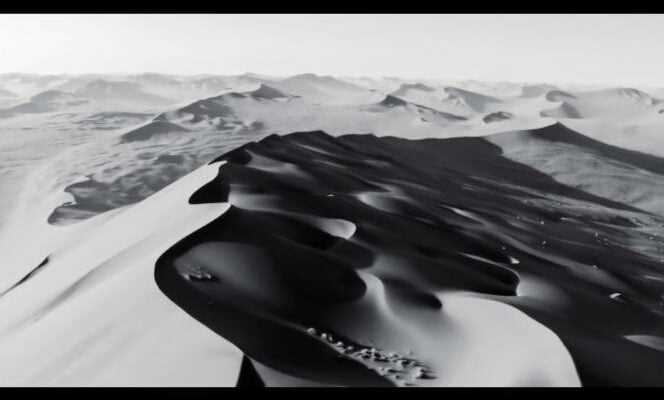The opinion of the “World” – Not to be missed
It was in October 2020, at the Fondation Cartier, in Paris, that after twenty-seven years of absence, the Armenian filmmaker Artavazd Pelechian unveiled his new film, Nature, in theaters this Wednesday. Born in 1938, in Leninakan – today Gyumri –, in Soviet Armenia, graduated from the famous Soviet film school VGIK, Artavazd Pelechian immediately lined up alongside Andreï Tarkovski or Alexandre Sokurov , among the great expressive poets of the Soviet school. This is all the more remarkable in that his filmography is made up of very little (nine short and medium-length films, made between 1964 and 1993, without dialogue and in black and white for the most part) and that the man, secret, solitary, like removed from the things of this world, owes his glory to the vigilance of his exegetes and his peers – at the head of which Serge Daney and Jean-Luc Godard – more than to his sense of interpersonal skills and publicity.
Breathtaking, almost unbreathable editing, a little over an hour long, the film shows the apocalyptic unleashing of nature sweeping away the man who mistreated her like a wisp of straw. Or what could not be called more trivially than “the end of the beans”, in images of chaos gleaned from the four corners of the Internet, filmed in the midst of disaster by the trembling hands of men subjected to the scourges of a nature disordered. Volcanic eruptions, tsunamis, tornadoes, storms, floods, landslides, collapses: everything is there to signify the weakness of man, and his imminent end, by fire, by water, by stones or by wind. We find in this maelstrom of destruction the figures of style specific to the filmmaker, taken to their paroxysm: repetition and pulsation, rises and falls, lyrical clash of sound and image.
torrents of mud
Obsessed for a long time by the possibility of chaos – of which each of his films attempts a virtuoso ordering – this hellish editor that is Pelechian turns definitively into a prophet with Nature. It is for him now the time of the ultimate film, which shows us the earth as it is no longer viable for the human race. You have to see, in a dark litany, these torrents of mud carrying away buildings, roads, bridges, cars and the men clinging to these trinkets. You have to hear this inarticulate clamor of fear, these sinister cracks, these last-minute explosions, these lightning bolts that lash the earth.
Nature, it is the fall of man, civilization collapsing, the earth vomiting us up. It’s the last symphony of climate change, with Beethoven and Shostakovich as choirmasters. It is the greatest disaster film of all time, the one that eclipses all the others by its proximity to the world to come. It is a film of total war, to which the lull which will succeed it, with its magnificent dawn and its chirping of birds, could represent the beginning of a world rid of our clutter.
You have 1.82% of this article left to read. The following is for subscribers only.
